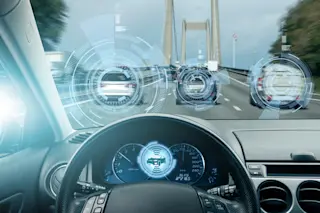Self-driving cars are set to revolutionize our roads, although exactly when is much debated. Until recently these vehicles all relied on a human backup driver who could take over at a moment’s notice.
But late last year, Google’s sister company, Waymo, began operating an entirely automated taxi service in Phoenix, alongside its automated vehicles human backups.
That places an important emphasis on the biggest outstanding question over this automated future: How safe can these vehicles be? And not just in simulators or on ring-fenced driving ranges; how do self-driving vehicles cope with real pedestrians, cyclists, runaway dogs, and other cars operated by error-prone humans?
Now, we get an answer thanks to the work of Mathew Schwall and colleagues at Waymo, a company that emerged from Google’s self-driving car initiative to become one of the biggest players in the incipient automated driving industry.
Schwall and his colleagues detailed every collision and ...














